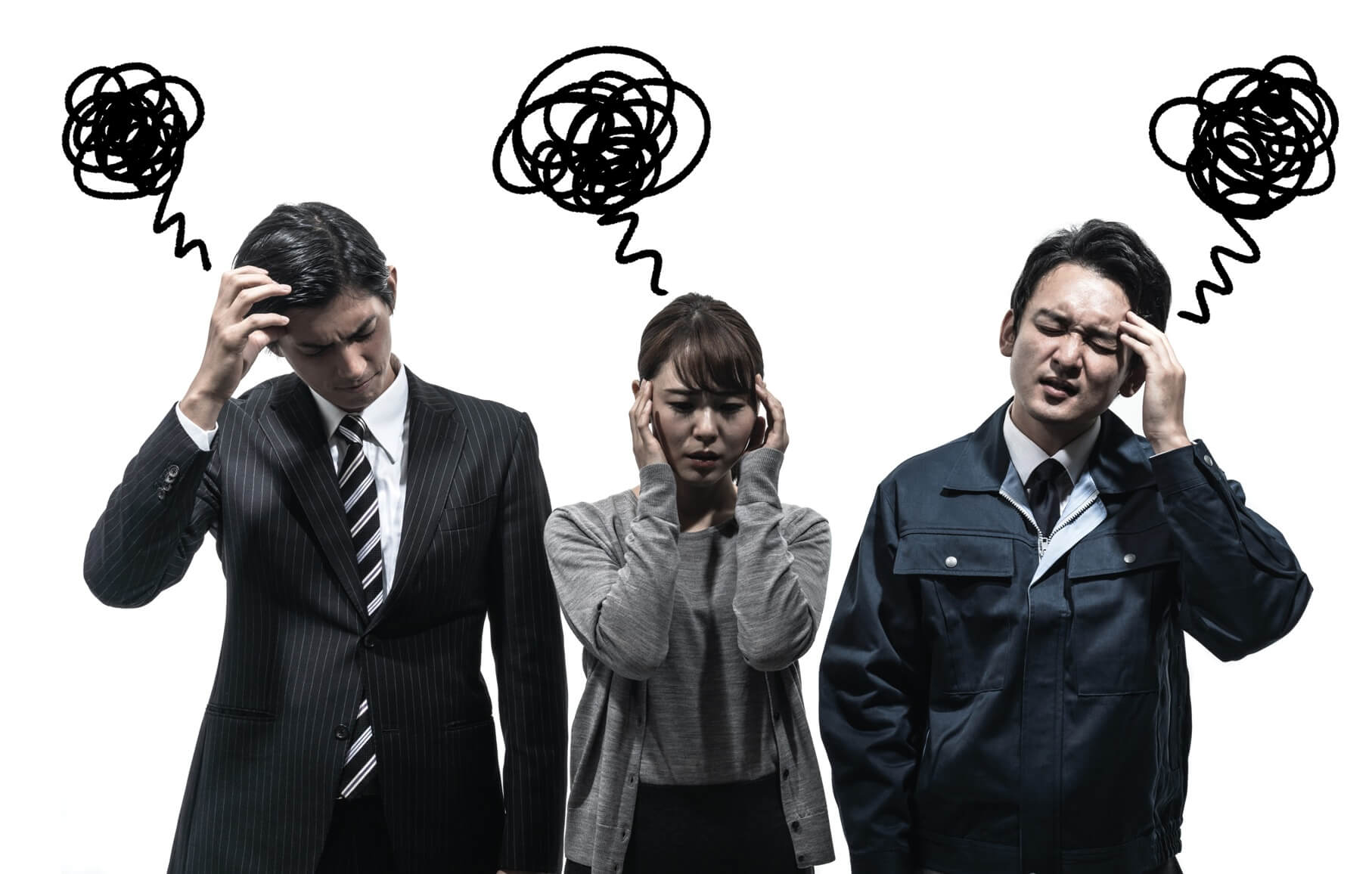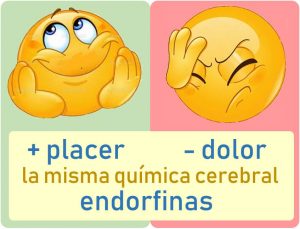In this post we will see the relationship between stress, anxiety and neuroscience. That is, the brain foundations of anxiety and stress. We will start by dealing about the relationship between anxiety and stress. So far in this blog we had only talked about stress. To do all this, we will refer to an article summarized in Neuroscience News, which explains that we, when anxious, exaggerate the response to the fear cues.
In this post we are going to focus on the fundamentals of anxiety in neuroscience. Also, we will deal about anxiety and stress: Its similarities and differences, and the existing relationships between anxiety and stress.
In previous articles, from NeuroQuotient®, we have already written about stress and neuroscience. Mainly, about self-induced stress (reducing or not increasing stress?). We have also seen how to manage stress. Specifically, how to avoid increasing it (learning not to increase stress with the neuroscience).
We had pending to discuss about the relationship between stress, anxiety and neuroscience. The decision to get into it has come when reading the summary of Neuroscience News: Anxious people quicker to flee danger.
This summary is about an article by Boweng J. Fung et al, Slow escape decisions are swayed by trait anxiety. Published in Nature Human Behavior.
This article helps us to confirm our ideas regarding anxiety and neuroscience. On the one hand, which are the brain centers involved in anxiety. On the other hand -the NeuroQuotient® point of view- that some cognitive processes, which we are very good at, can limit us. For example, wanting to stop anxiety, we get the opposite. In the final part of the post we will comment it thoroughly.
In this blog we talk more about stress than anxiety.
If in previous posts we have focused on stress and not anxiety and neuroscience, it is because the NeuroQuotient® tool and, consequently, this blog is more focused on coaching and in business contexts. They are also very appropriate for psychology and life coaching, but less for psychiatry and medicine.
Our purpose is to provide tools to coaches and psychologists, to help their clients to increase their satisfaction and self-leadership. In this case, for example, managing stress better; one of the most common problems of our society. When it comes to psychiatric issues, like anxiety disorders, we prefer to make way for psychiatric professionals.
In the same way that professionals define themselves in the opposite direction. One of the referents in psychiatry on the subject of anxiety is the Dr. Antoni Bulbena. In his book Ansiedad. Neuro conectividad: La Re-evolución, says textually: ‘Stress is a word very used in popular language but that professionals tend to use little’.
In NeuroQuotient we leave, then, psychiatric disorders for professionals. However, we must not forget that to determine the key brain systems in human behavior, we asked ourselves the following question: What are the brain centers and pathways involved in the most frequent disorders? What happens in depression, in ADD, etc. Also, in anxiety disorders. That’s why we can easily understand the relationship between anxiety and neuroscience.
Anxiety and stress according to professionals.
What do the experts tell us?
The SEAS, Spanish Society for Anxiety and Stress, in the questions and answers section, tell us about anxiety as an emotion. ‘An unpleasant emotion … that arises in a situation in which the individual perceives a threat (possible negative consequences). To confront this situation and try to reduce the negative consequences the individual must put him/her-self on alert.
It is shown at different levels,
At the cognitive-subjective level, … it is characterized by feelings of discomfort, worry, hypervigilance, tension, fear, insecurity, feeling of loss of control, perception of strong physiological changes (cardiac, respiratory, etc.).
At the physiological level, … it is characterized by the activation of different systems, mainly the Autonomic Nervous System and the Motor Nervous System. Although others are also activated, such as the Central Nervous System, or the Endocrine System, or the Immune System …
At the motor or observable level, … it manifests as motor restlessness, hyperactivity, repetitive movements, difficulties in communication (stuttering), avoidance of feared situations, consumption of substances (food, drink, tobacco, etc.), crying, tension in the facial expression, etc. ‘
Following with the SEAS. Regarding stress, they explain …
‘Currently stress is interpreted as an interactive process, in which the demands of the situation and the resources of the individual to face the situation are at stake. The demands of the situation depend on the subjective assessment that the individual makes about how this situation will affect their interests. Therefore, the same situation can be much more stressful for one individual than for another.
In turn, coping resources are also valued by the individual himself, who may judge them inadequate, although they really are not. This bias in the valuation of own resources will also cause a greater reaction of stress, a greater overload, and a worse use of own resources.’
What they see between anxiety and stress in the SAES (Spanish Society for Anxiety and Stress)
‘Does anxiety and stress could be used as synonyms?
‘In many cases the terms anxiety and stress are used as synonyms, however, there are different fields of work in research and professional practice, although certainly with some overlaps.
Stress is a process in which the individual faces the demands of an important situation for him. This process can trigger an anxiety reaction, which is an unpleasant emotion that arises in the face of a possible threat.
However, stress can also trigger other emotional reactions other than anxiety, for example: joy, satisfaction, anger, sadness, etc.
And how do we see in NeuroQuotient this relationship between anxiety and stress?
In our interpretation we are going to relate stress, anxiety and neuroscience. Let’s see:
In the face of an actual (or imagined) threat, the brain amygdala that is part of the threat (or fear) system is activated. Then, the stress system is put in place to be able to fight (cope with the threat) or flee.
Stress is related to the autonomic nervous system (ANS). In stress, the sympathetic branch of SNA (adrenaline) activates to trigger energy and fight or flight. The heart beats faster, the bronchi expand, the muscles tense, etc. But, at the same time, the parasympathetic branch of the SNA, slows down.
The parasympathetic branch helps the recovery of energy. It facilitates, for example, the secretion of saliva, and digestion; rest, closing the pupils and the bronchi. Therefore, when we are stressed (with the SNA parasympathetic branch less active) some symptoms can appear: dry mouth, digestive problems, difficulty to sleep, etc.
But, as we told, in humans the threats, the stimuli of fear, can be imagined (‘we imagine lions where there are none’) or exaggerated (‘we turn mice into lions’). In this case, our prefrontal cortex (CPF) intervenes interpreting the situations. When the tendency to pay attention to small dangers, real or imagined, and to interpret them negatively and with exaggeration, we can talk about anxiety. If this is accompanied of stress symptoms, of course.
In addition, normally, humans in a social situation do not fight or flee physically. Our Motor Nervous system are not fully activated. Therefore, we do not release the energy triggered by the stress system and we can end up somatizing it.
Also, when permanently stressed, not only are we on alert, but the stress slow way is set in motion. The stress way of cortisol. Cortisol, among other functions, consumes the body’s reserves to release more energy, and we end up exhausted.
And to all of this we can add the negative interpretation of the physical signals of stress.
If we tend to be anxious, we negatively interpret the physical signs of somatized stress, very likely. We have, then, another source of imagined and/or exaggerated threat. The consequence is, therefore, more anxiety and stress.
Thus, from NeuroQuotient, we see the fundamental characteristics of anxiety in the exaggerated and negative interpretation of the stimuli of fear (sometimes imagined) and body stress signals. The origin of anxiety is, then, in our thinking ability.
With all of this, we are more alert and more prepared to activate the stress system. And the loop is negatively reinforced.
And, when this tendency and symptoms are very high we can fall into a …
… Generalized anxiety disorder
Let’s see what the NHI, National Institute of Mental Heath, tells us about Generalized Anxiety Disorder:
‘People with generalized anxiety disorder are extremely worried or very nervous about … many … things, even when there is little or no reason to worry. It is not easy for them to … control their anxiety and stay focused on daily activities
What are the signs and symptoms of GAD?
GAD develops slowly. It often starts during the teen years or young adulthood. People with GAD may:
- Worry very much about everyday things
- Have trouble controlling their worries or feelings of nervousness
- Know that they worry much more than they should
- Feel restless and have trouble relaxing
- Have a hard time concentrating
- Be easily startled
- Have trouble falling asleep or staying asleep
- Feel easily tired or tired all the time
- Have headaches, muscle aches, stomach aches, or unexplained pains
- Have a hard time swallowing
- Tremble or twitch
- Be irritable or feel “on edge”
- Sweat a lot, feel light-headed or out of breath
- Have to go to the bathroom a lot.
Summarizing, what we told before: a high tendency to imagine, interpret and anticipate negatively (worry). With activation, consequently, of almost permanent stress. Together with stress somatization, which we also interpret in a negative way.
When they have time to think, people with anxiety react more quickly to fear cues.
Let’s finish with the article by Boweng J. Fung et al., which we quoted at the beginning:
Slow escape decisions are swayed by trait anxiety. Published in Nature Human Behavior.
And with its summary in Neuroscience News: Anxious people quicker to flee danger.
In the essays, the participants were presented with a stimulus of fear, simulated in a computer game. Half of these participants had a high level of anxiety, evaluated according to the DSM (Diagnostic and Statistical Manual of Mental Disorders).
In a first essay, the virtual threat ((the fear stimulus) appeared suddenly. There was no time to make a rational decision (quick escape decision). In this case all the people, whether they had anxiety or not, ‘escaped’ quickly.
However, when the fear stimulus appear farther away, and they had time to evaluate it (slow escape decision), participants with anxiety escaped earlier.
That is, when they have time to think, people with anxiety react more quickly to fear stimuli.
All this reaffirms us in that the origin of the anxiety is in the dysfunctional use of the ability to think that we humans have. Let’s see it
The article confirms us which are the brain centers that participate in the anxiety circuit. The centers and pathways involved in the anxiety and neuroscience relationship are the vmPFC (ventromedial prefrontal cortex), the amygdala (limbic center of the threat system) and the hippocampus (memory center).
The amygdala, as we said above, is the one that, after its activation, starts the sympathetic autonomic nervous system (stress) to fight or escape.
How do we see all this from NeuroQuotient? How do we think the stress, anxiety and neuroscience relationship works?
Our hypothesis is that, we learn, we anticipate, we plan, etc. to be able to think that we have resources to calm the amygdala (see how not to increase stress). To believe our-selves prepared to be able to send a message of calm from the vmPFC to the interspersed GABA neurons of the amygdala. The GABA neurons prevents from activating the central amygdala. A message saying something like ‘I am prepared to face the future uncertainty’.
This is a skill of rational people, who are very accustomed to using the prefrontal cortex. An ability that many times can turn against us.
It turns against us when the preparation is excessive and negative. ‘When we imagine lions where there will never be lions’ or when with our thought ‘we turn mice into lions’. Wanting to calm the fear, we achieve the opposite. We generate our own anxiety. We are almost permanently on alert. With the stress system sensitized, ready to attack or flee.
What happens with anxious people when a cue of fear (actual or simulated as in the experiment) appears, and they have time to evaluate it?
Well, the circuit vmPFC, memory, and amygdala turn on. We are searching in memory the strategy that, supposedly, we have prepared for this situation, to be able to send the calm message to the amygdala.
However, having, on the one hand, threat and stress systems sensitized, ready to respond. Together, on the other hand, that the emotional limbic part works much faster than the rational part. Then, the result is that people with anxiety escape sooner, before finding the solution in memory.




